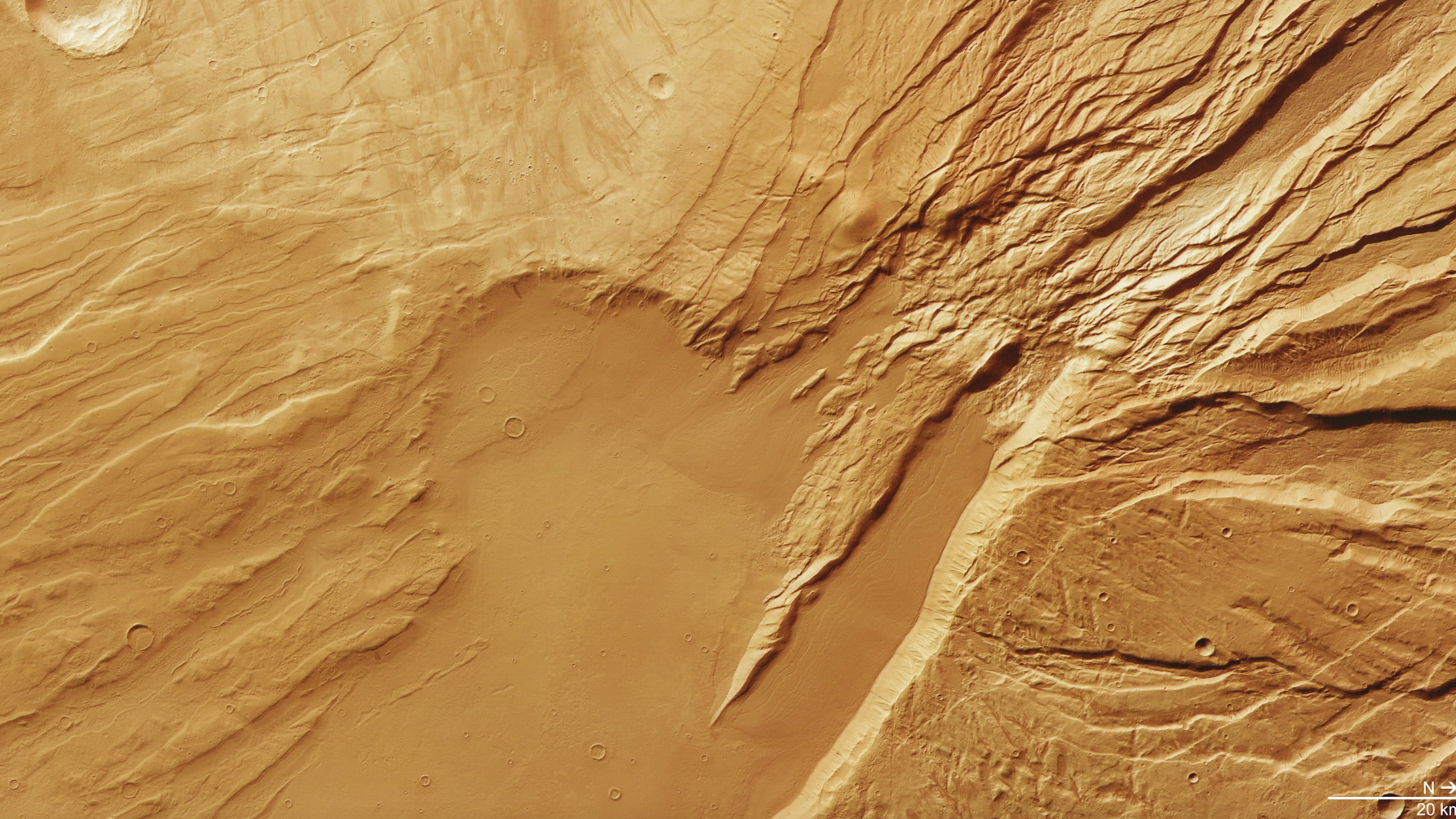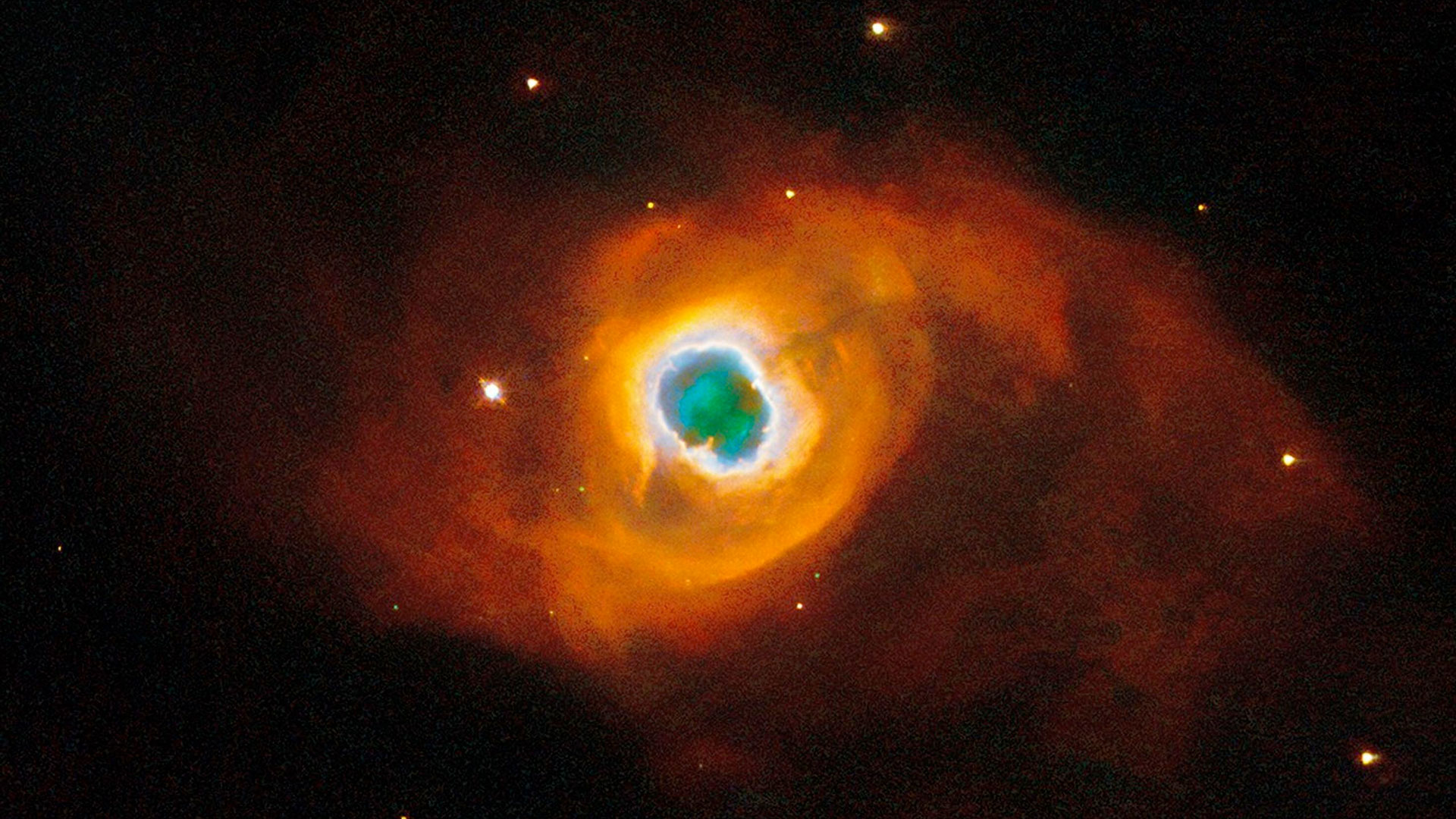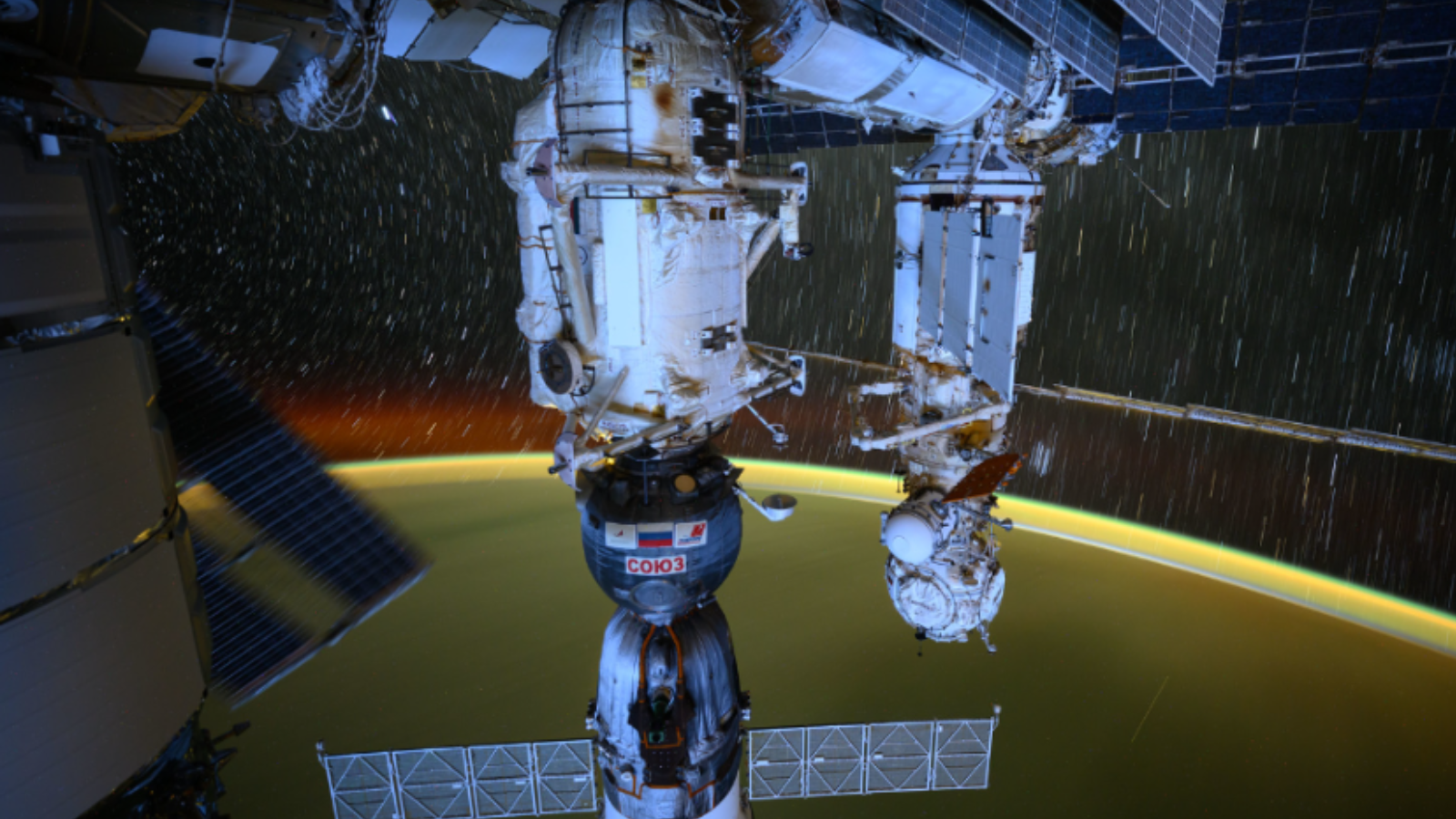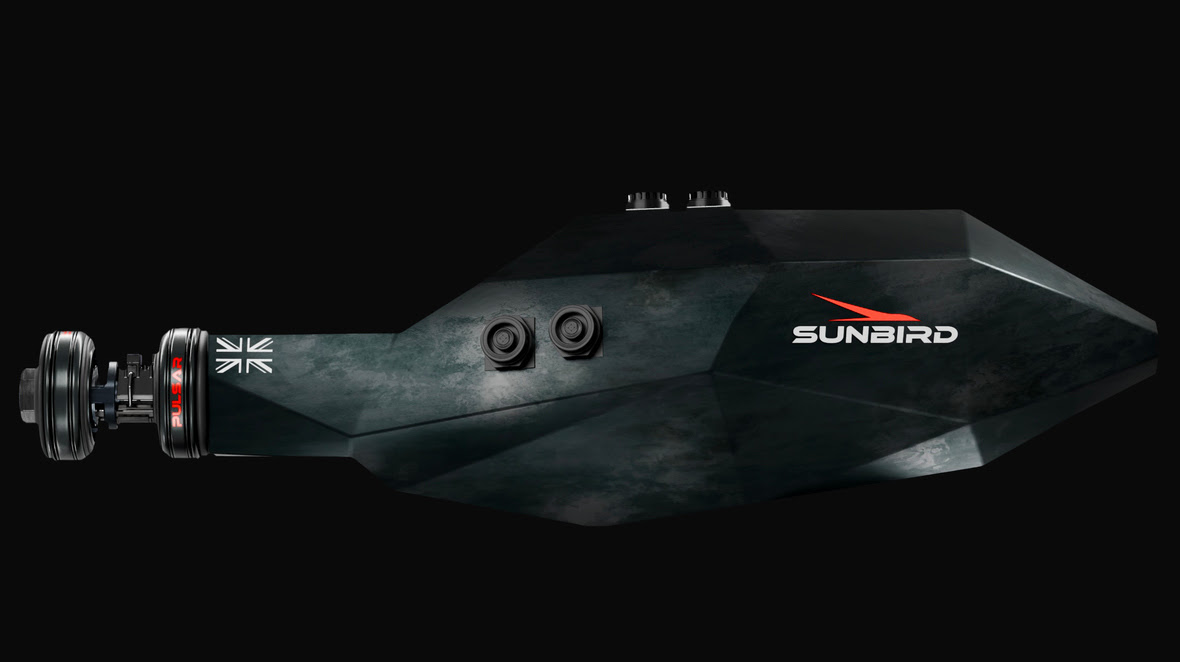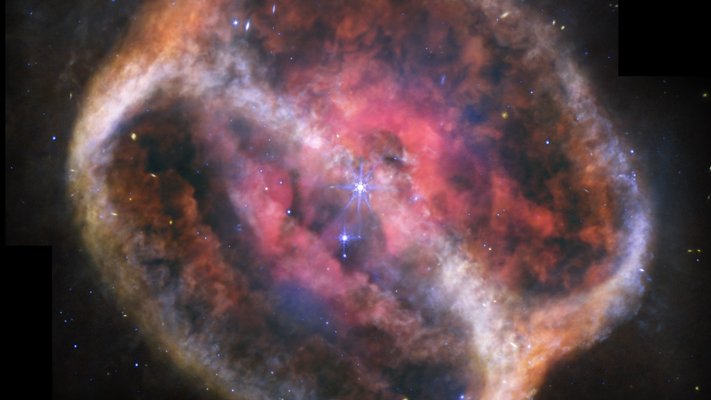Aurora alert! Powerful geomagnetic storm could spark northern lights as far south as Illinois and Oregon tonight
Heads up aurora chasers! Powerful geomagnetic storm conditions could trigger northern lights at mid-latitudes overnight as CME impact is detected.
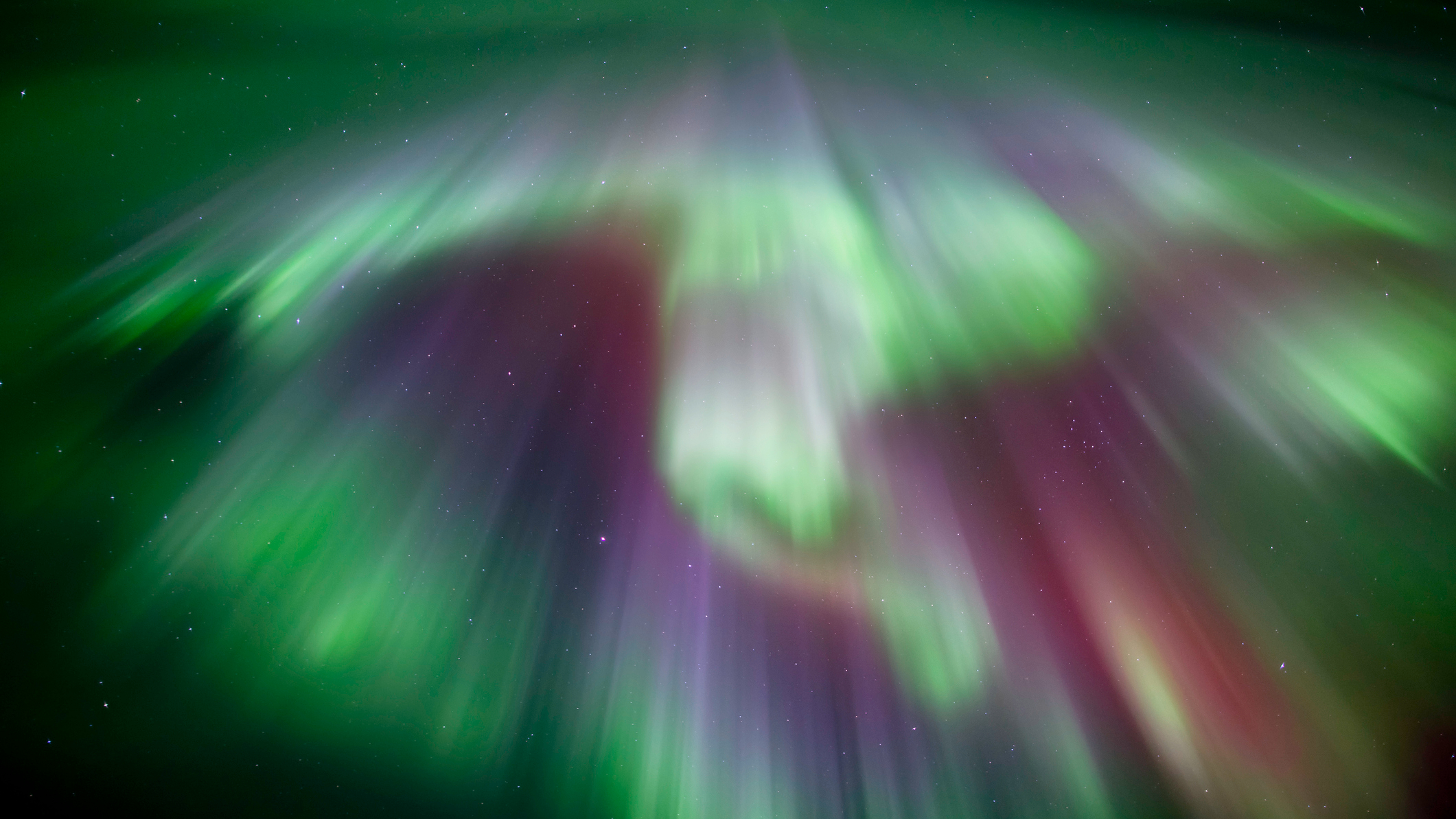
Aurora chasers, get ready! The National Oceanic and Atmospheric Administration's (NOAA) Space Weather Prediction Center (SWPC) has issued a geomagnetic storm warning due to an incoming one-two punch from the sun, and we have just possibly received the first blow.
The predicted G3-level storm conditions could bring northern lights as far south as Illinois and Oregon (typically 50° geomagnetic lat.) tonight and tomorrow.
The incoming "punch" from the sun is expected to arrive in the form of two coronal mass ejections (CMEs) that are expected to strike Earth in quick succession. The CMEs were launched during a rare double eruption of solar magnetic filaments on April 12 and April 13. Arriving hours earlier than expected a CME struck Earth's magnetic field at 1 p.m. ET (1700 GMT) according to Spaceweather.com. At the time of writing it is currently too early to tell whether the impact is the first CME or maybe a combination of the two.
NOAA classifies geomagnetic storms using a G-scale, which ranks their intensity from G1 (minor) to G5 (extreme). The recent geomagnetic storm watch NOAA issued is rated a G3, indicating "strong" storm conditions. "Watches at this level are infrequent, but not uncommon," NOAA SWPC wrote in the geomagnetic storm watch statement.
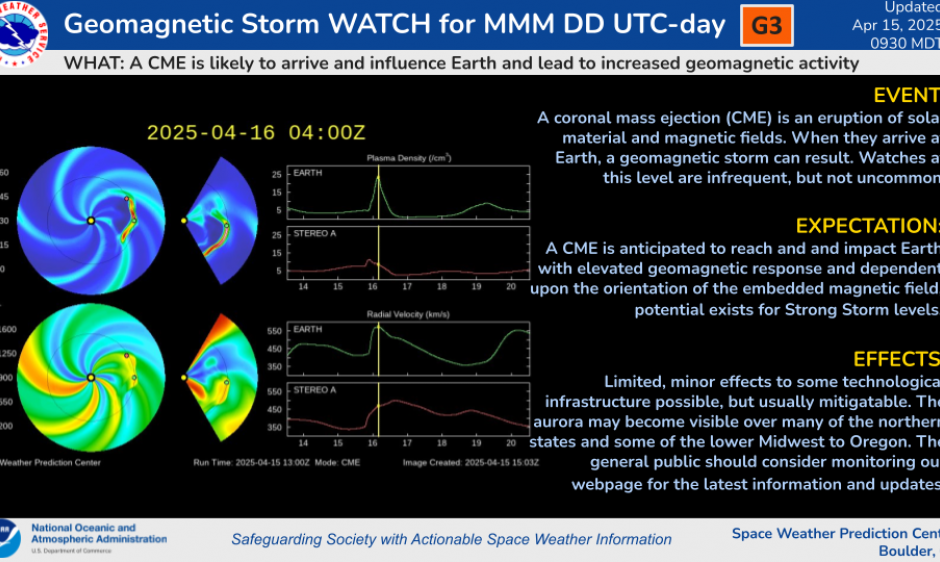
CMEs are large expulsions of plasma and magnetic field from the sun; when they collide with Earth's magnetic field, they can cause geomagnetic storms that trigger brilliant auroras, sometimes visible much farther south than usual. With this event, auroras may be visible as far south as Oregon and Illinois, making it a must-watch for northern lights enthusiasts. The effects of the solar punch are expected to be felt through April 17, with heightened geomagnetic activity predicted over the next few days.
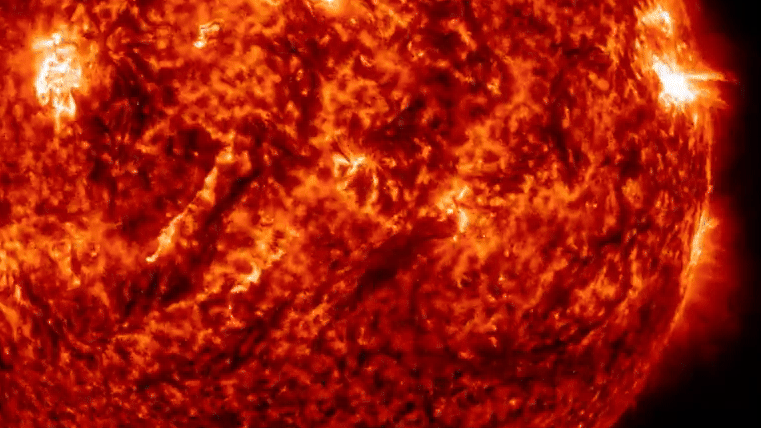
The timing of the CME impacts can vary, so it’s important to stay updated on space weather alerts that provide real-time forecasts based on your location. A great option is "My Aurora Forecast & Alerts" (available for iOS and Android). For a deeper dive into space weather conditions, "Space Weather Live" is another excellent choice (available for iOS and Android)
You can keep up to date with the latest aurora forecasts and geomagnetic storm warnings with our northern lights alert live blog.
Get the Space.com Newsletter
Breaking space news, the latest updates on rocket launches, skywatching events and more!
Editor's note: This story was updated at 3 p.m. EST (1900 GMT) to include details of the initial CME impact that arrived earlier than previously predicted.
Join our Space Forums to keep talking space on the latest missions, night sky and more! And if you have a news tip, correction or comment, let us know at: community@space.com.

Daisy Dobrijevic joined Space.com in February 2022 having previously worked for our sister publication All About Space magazine as a staff writer. Before joining us, Daisy completed an editorial internship with the BBC Sky at Night Magazine and worked at the National Space Centre in Leicester, U.K., where she enjoyed communicating space science to the public. In 2021, Daisy completed a PhD in plant physiology and also holds a Master's in Environmental Science, she is currently based in Nottingham, U.K. Daisy is passionate about all things space, with a penchant for solar activity and space weather. She has a strong interest in astrotourism and loves nothing more than a good northern lights chase!
You must confirm your public display name before commenting
Please logout and then login again, you will then be prompted to enter your display name.
